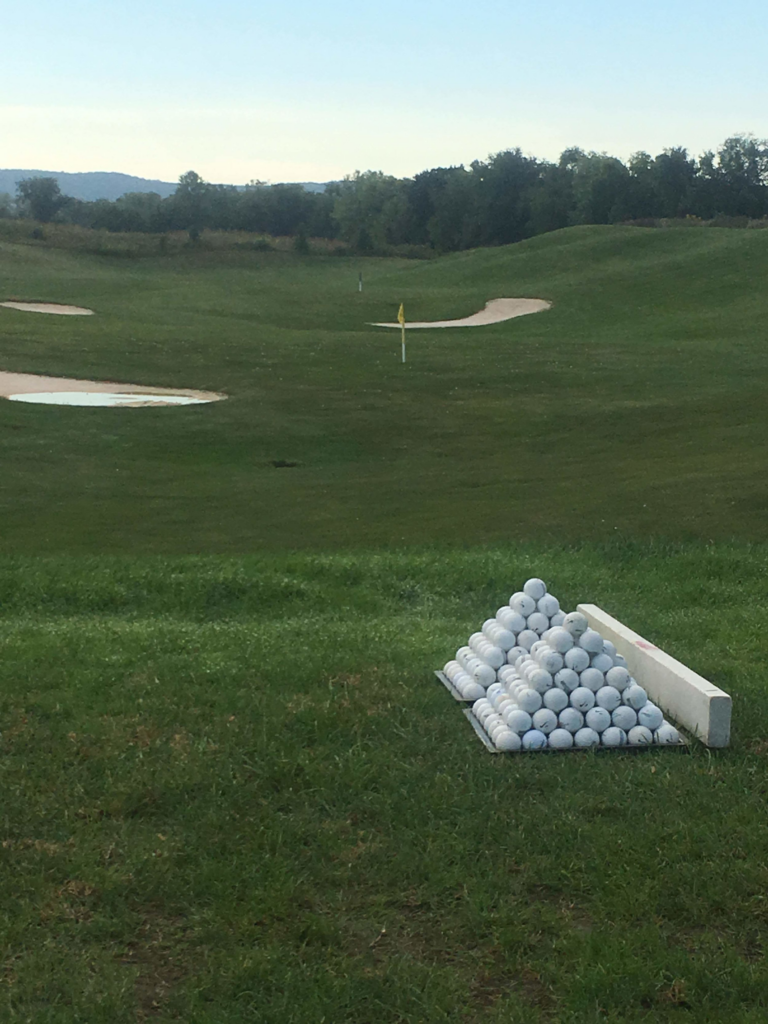Crafting an effective practice routine at the driving range is more than a tradition; it’s a strategic endeavor that can significantly improve your golf game. Despite the common sight of golfers tirelessly swinging at bucket after bucket, the key to real improvement lies in a smarter, more focused approach to practice. Drawing from insights provided by experts and seasoned golfers, this post delves into a holistic method to use the driving range not just as a place to hit balls, but as a platform for substantial game enhancement.

The Importance of a Proper Warm-Up
The journey to a more productive practice begins long before the first ball is struck. A thorough warm-up is essential, targeting not just the golf swing but the entire body. Stretching exercises that focus on the shoulders, mid and upper back, hips, and thighs prepare the body for the activity ahead, reducing the risk of injury and improving overall performance. Beginning your session with easy half swings using your wedges and gradually increasing to full shots encourages a focus on control and feel, crucial for a successful day at the range. [“]
Every Shot Must Have a Purpose
Randomly hitting balls with no clear intention might feel productive, but it’s a practice habit that leads to minimal improvement. Instead, each shot should be made with a specific purpose in mind. This includes setting a clear target, deciding on the shot shape, and determining the trajectory before even taking a swing. Incorporating a full pre-shot routine with every shot simulates the conditions and pressures of an actual game, making practice sessions far more valuable. [“]
Diversifying Your Practice
Variety is not just the spice of life but also the key to effective practice. Constantly changing clubs, targets, and types of shots keeps the practice session engaging and challenges the golfer to adapt, a crucial skill on the course. Technology like Toptracer can offer immediate feedback on your shots, providing valuable insights into your strengths and areas that require improvement. [“]

The Concept of Transfer Practice
Transfer practice, or practicing in a way that mirrors actual play on the golf course, is essential for translating practice session improvements to real game situations. This involves playing simulated holes, envisioning different scenarios, and adjusting to various targets, promoting adaptability and strategic thinking. Such a method ensures that the skills honed at the range are more likely to be accessible when they’re most needed during play. [“]
The One Ball Rule for Short Games
Practicing chipping or putting with only one ball imitates the conditions found on the golf course, where usually only one chance is available to make the shot. This approach helps to improve focus and accuracy under pressure, a vital aspect of golf that often differentiates between good and great players. [“]
Creativity with Clubs and Targets
Incorporating creativity into practice sessions by using the same club for different targets or altering ball flights encourages a golfer to become more versatile. This not only makes practice more interesting but also enhances the golfer’s ability to make minor technical adjustments on the fly, a necessary skill for navigating the varied challenges of a golf course. [“]
Pre-Shot Routine Practice
A consistent and well-drilled pre-shot routine can significantly increase a golfer’s comfort and confidence on the course. Practicing this routine at the range, though it may seem monotonous, ensures that it becomes second nature, allowing the golfer to focus more on the shot and less on the mechanics of their swing. [“]
Embracing Trouble Shots
Golf is a game of unpredictability, and practicing only the shots you’re comfortable with does little to prepare you for the challenges of the course. Including trouble shots in your practice routine, such as chipping out from tough lies or navigating through trees, equips you with the skills to handle adverse situations more effectively. [“]
Implementing Games and Challenges
Creating scenarios that simulate the pressure of a real game can make practice both fun and beneficial. Setting specific goals for each shot or session introduces a competitive element, pushing the golfer to improve and adapt under conditions that resemble those experienced during play. [“]
The Up-And-Down Practice Game
A simple yet effective practice game involves simulating an up-and-down situation, combining chipping with putting to mirror a common scenario on the course. This type of practice not only improves technical skills but also mental toughness, preparing the golfer for the pressure of making par-saving shots. [“]

In conclusion, effectively utilizing the driving range involves much more than mindlessly hitting balls. It requires a strategic approach that includes a proper warm-up, purposeful shots, diversified practice, transfer practice, and the implementation of specific games and challenges. By adopting these methods, golfers can ensure that their time at the range translates into tangible improvements on the course, turning practice into progress and challenges into opportunities for growth.
Leave a Reply